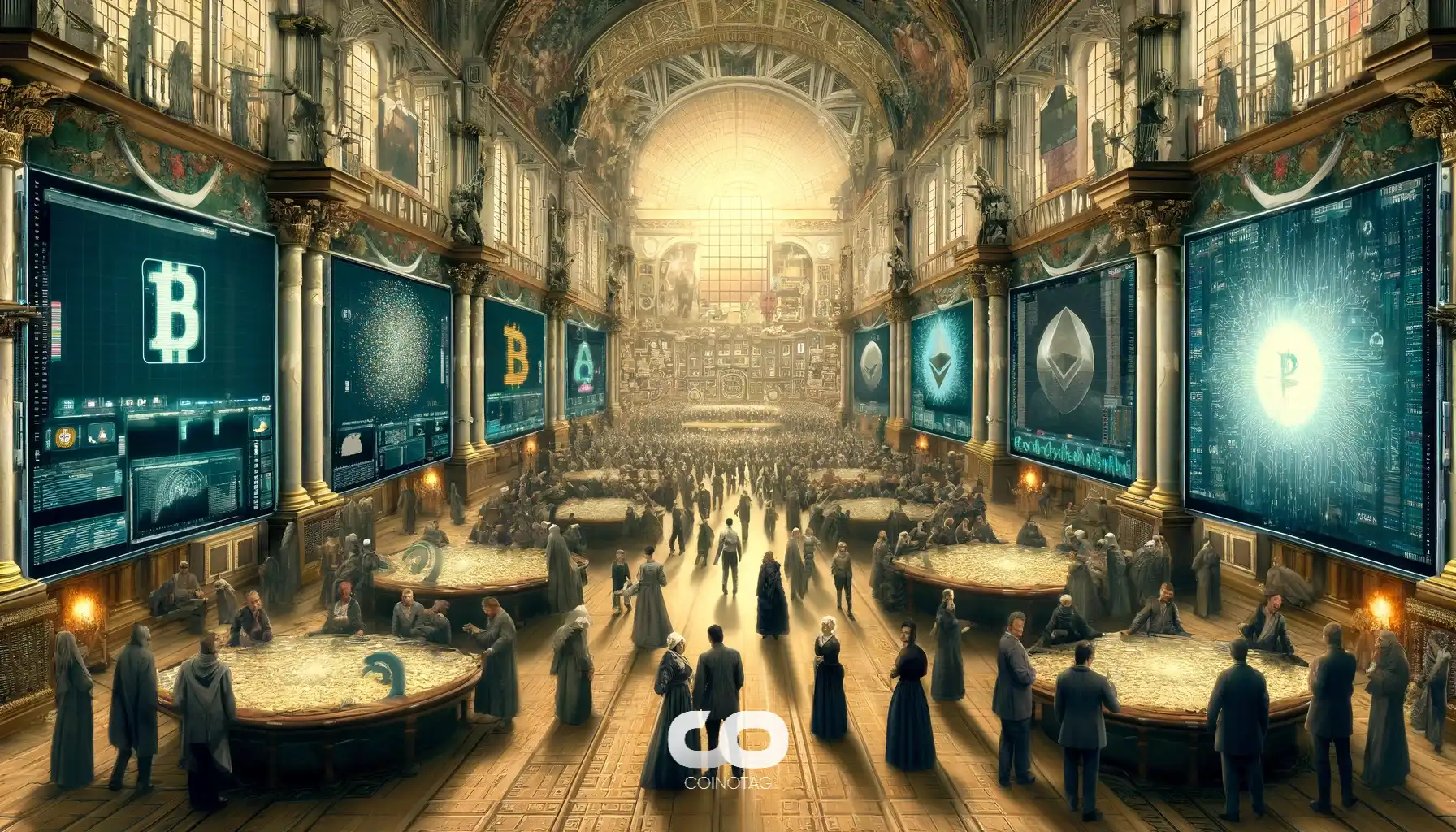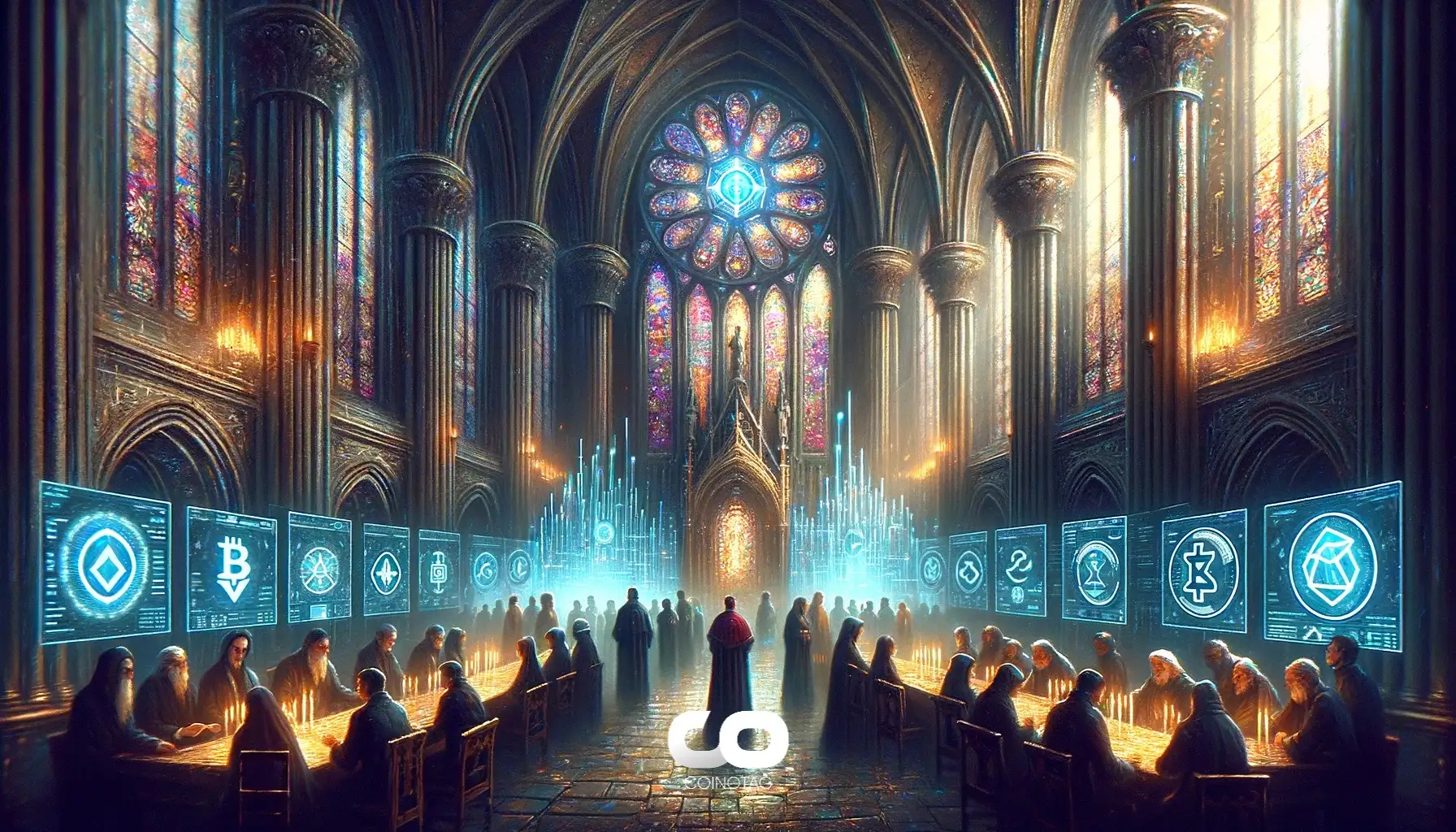1. What Is Maker (MKR)?


Maker (MKR) is the governance token of the MakerDAO and Maker Protocol — respectively a decentralized organization and a software platform, both based on the Ethereum blockchain — that allows users to issue and manage the DAI stablecoin.
Initially conceived in 2015 and fully launched in December 2017, Maker is a project whose task is to operate DAI, a community-managed decentralized cryptocurrency with a stable value soft-pegged to the US dollar.
MKR tokens act as a kind of voting share for the organization that manages DAI; while they do not pay dividends to their holders, they do give the holders voting rights over the development of Maker Protocol and are expected to appreciate in value in accordance with the success of DAI itself.
The Maker ecosystem is one of the earliest projects on the decentralized finance (DeFi) scene: the industry that seeks to build decentralized financial products on top of smart-contract-enabled blockchains, such as Ethereum.
2. Who Are the Founders of Maker?


MakerDAO, the first entity inside the larger Maker ecosystem, was created in 2015 by Rune Christensen, an entrepreneur from Sealand, Denmark.
Christensen graduated from Copenhagen University with a degree in biochemistry and studied international business at the Copenhagen Business School. Prior to MakerDAO, he co-founded and managed the Try China international recruiting company.
3. What Makes Maker Unique?


As of October 2020, DAI is one of the most popular stablecoins (cryptocurrencies whose prices are pegged to the USD or another traditional currency). It is the 25th largest cryptocurrency at over $800 million in market capitalization and it has more active addresses than USDT — the largest stablecoin on the market.
MKR’s unique proposition lies in the fact that it allows its holders to directly participate in the process of governing DAI. Every holder of Maker tokens has the right to vote on a number of changes to the Maker Protocol, with their voting power depending on the size of their MKR stake. Some of the aspects of the protocol the holders can vote on are:
* Adding new collateral asset types to the protocol, allowing users to submit new cryptocurrencies to mint more DAI;
* Amend the risk parameters of existing collateral asset types;
* Change the DAI Savings Rate: holders of DAI tokens can earn savings by locking them in a special contract, and the Savings Rate impacts the profitability of that contract;
* Choose the oracles — entities whose goal is to supply trustworthy off-blockchain data to the Maker ecosystem;
* Upgrades to the platform.
This ability to participate in the management of one of the largest stablecoins on the market is what drives the demand for MKR tokens and correspondingly affects their value.
4. How Many Maker [MKR] Coins Are There in Circulation?


The issuance and removal of MKR from the system is governed by a complex system of interdependent mechanisms designed to ensure that DAI is always fully collateralized by other cryptocurrency assets and its soft peg to the USD is maintained. There is no hard-coded limit on the total supply of MKR.
DAI’s value is secured by collateral — other cryptocurrencies that are deposited by users when minting new DAI tokens and stored in so-called vaults — smart contracts on the Ethereum blockchain.
During price downswings, the value of crypto stored in the vault might become insufficient to fully collateralize the corresponding amount of DAI. In that case, the Maker Protocol automatically initiates the liquidation of the vault’s contents, the proceeds of which it uses to cover that vault’s obligations. If the amount of DAI generated during the liquidation is not enough, the Maker Protocol mints new MKR tokens to sell and cover the remaining sum, thereby increasing the total supply.
However, in some cases, the amount of DAI made from the auctions exceeds the necessary limit to ensure full collateralizations — then, it is used by the Maker Protocol to buy back and burn MKR tokens, decreasing their total supply.
Thus, the supply of MKR is a dynamic value that changes depending on market conditions and the overall health of the DAI ecosystem. As of October 2020, the circulating supply of Maker tokens is about 1 million, worth more than $500 million.
5. How Is the Maker Network Secured?


MKR is an ERC-20 token, meaning that it runs on and is secured by the Ethereum blockchain. Ethereum, in turn, is secured by its Ethash proof-of-work function.
6. Where Can You Buy Maker (MKR)?


Maker token trading is available on such exchanges as:
* Binance
* OKEx
* Uniswap
* Coinbase Pro
7. Related Pages:


Find out more about USDT, another USD-pegged stable cryptocurrency
Learn more about stablecoins on CMC Alexandria, our educational portal.
8. What is Blockchain?


Blockchain is a decentralized and distributed ledger technology that securely records transactions across multiple computers in a verifiable and permanent way. It forms the underlying technology for cryptocurrencies like Bitcoin and enables transparency, security, and immutability.
9. What is Cryptocurrency?


Cryptocurrency is a digital or virtual form of currency that uses cryptography for security. It operates on decentralized networks, typically based on blockchain technology, and facilitates secure and transparent peer-to-peer transactions.
10. What is Bitcoin?


Bitcoin is the first and most well-known cryptocurrency, created in 2009 by an anonymous person or group known as Satoshi Nakamoto. It operates on a decentralized peer-to-peer network and is used for secure, transparent, and censorship-resistant transactions.
11. What is the difference between Bitcoin and Altcoins?


Bitcoin is the original and most widely recognized cryptocurrency, while altcoins refer to any other cryptocurrencies besides Bitcoin. Examples of altcoins include Ethereum, Ripple (XRP), Litecoin (LTC), and many others.
12. What is Staking?


Staking involves participants locking up a certain amount of cryptocurrency in a wallet to support the operations of a blockchain network. It is commonly associated with proof-of-stake (PoS) and delegated proof-of-stake (DPoS) consensus mechanisms, where participants receive rewards for helping secure the network.
13. How Can I Stake Cryptocurrency?


To stake cryptocurrency, you typically need to choose a platform or network that supports staking. Transfer your tokens to a compatible wallet, follow the staking instructions provided by the platform, and lock up the desired amount of cryptocurrency. Once staked, you may start earning rewards.
14. What Are Staking Rewards and How Are They Calculated?


Staking rewards are incentives provided to participants who lock up their cryptocurrency to support the network. The amount of rewards varies and is influenced by factors such as the network's inflation rate, the total amount staked, and the specific rules of the staking protocol.
15. Can I Unstake My Cryptocurrency at Any Time?


The ability to unstake and withdraw your cryptocurrency depends on the specific staking protocol and network. Some platforms may have lock-up periods or unbonding periods during which your staked tokens are inaccessible. Always check the terms and conditions of the staking service.
16. What are the Risks of Staking?


Staking comes with risks, including the potential loss of staked funds if a participant behaves maliciously or fails to fulfill their responsibilities. Market volatility can also impact the value of staked tokens. It's crucial to thoroughly research the staking protocol and understand the associated risks.
17. Can I Lose Money by Staking?


While staking is designed to be a rewarding activity, there is a risk of losing money, especially if the value of the staked cryptocurrency decreases or if the staking protocol encounters security issues. It's important to consider both the potential rewards and risks before participating in staking.




